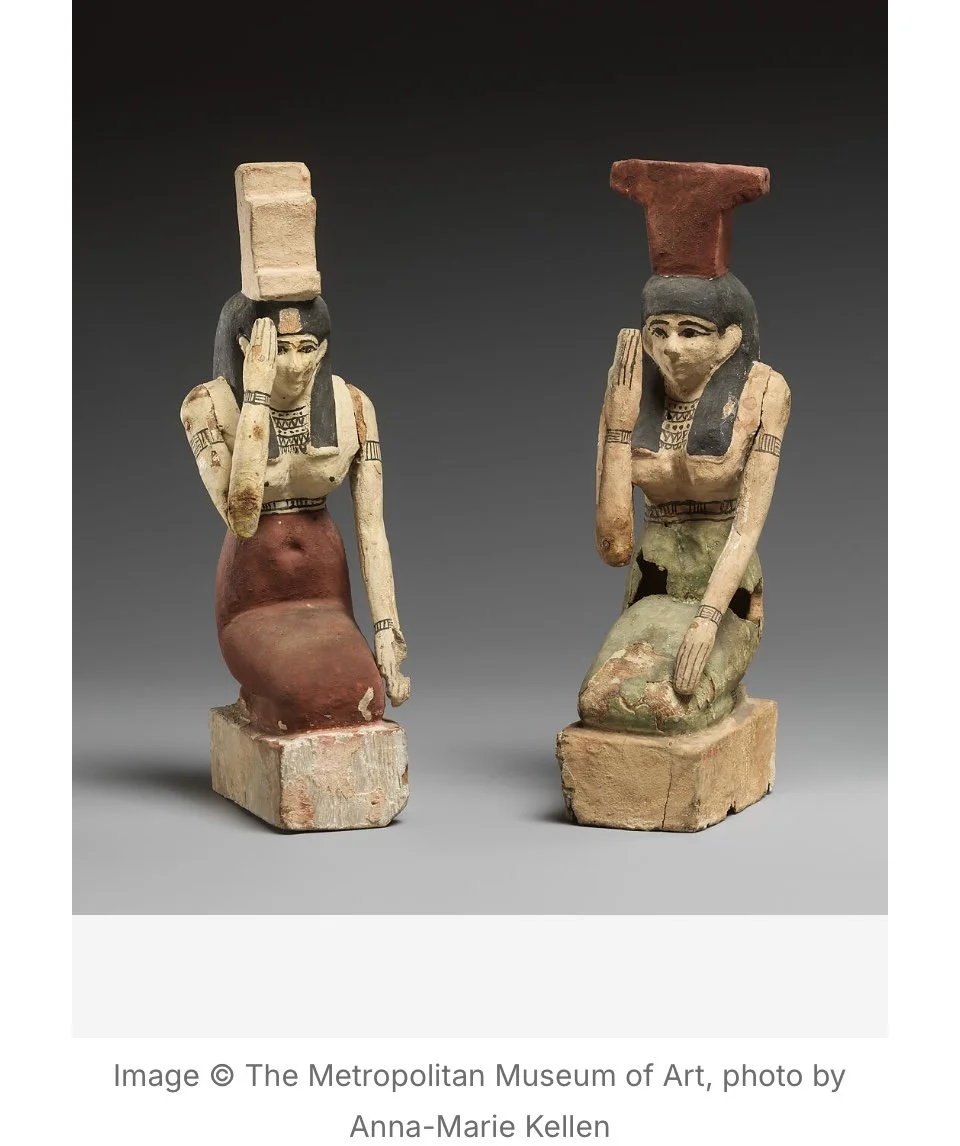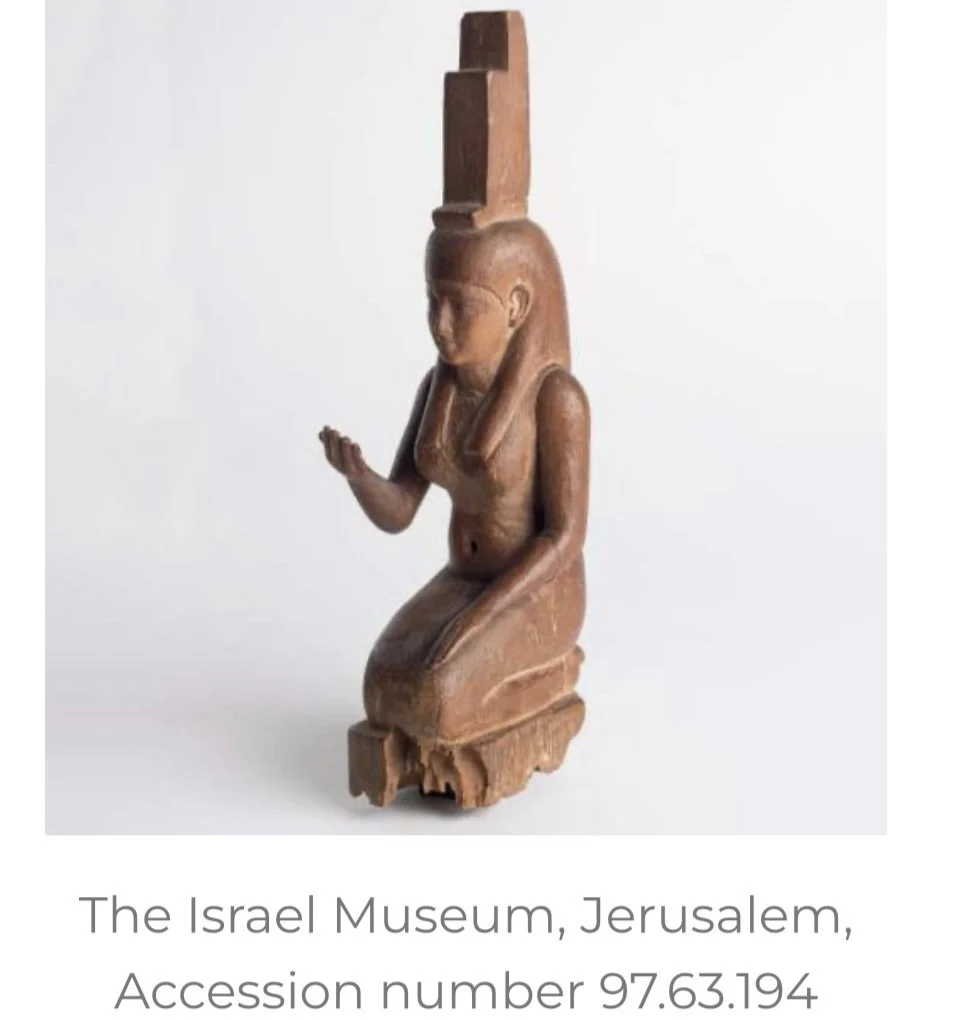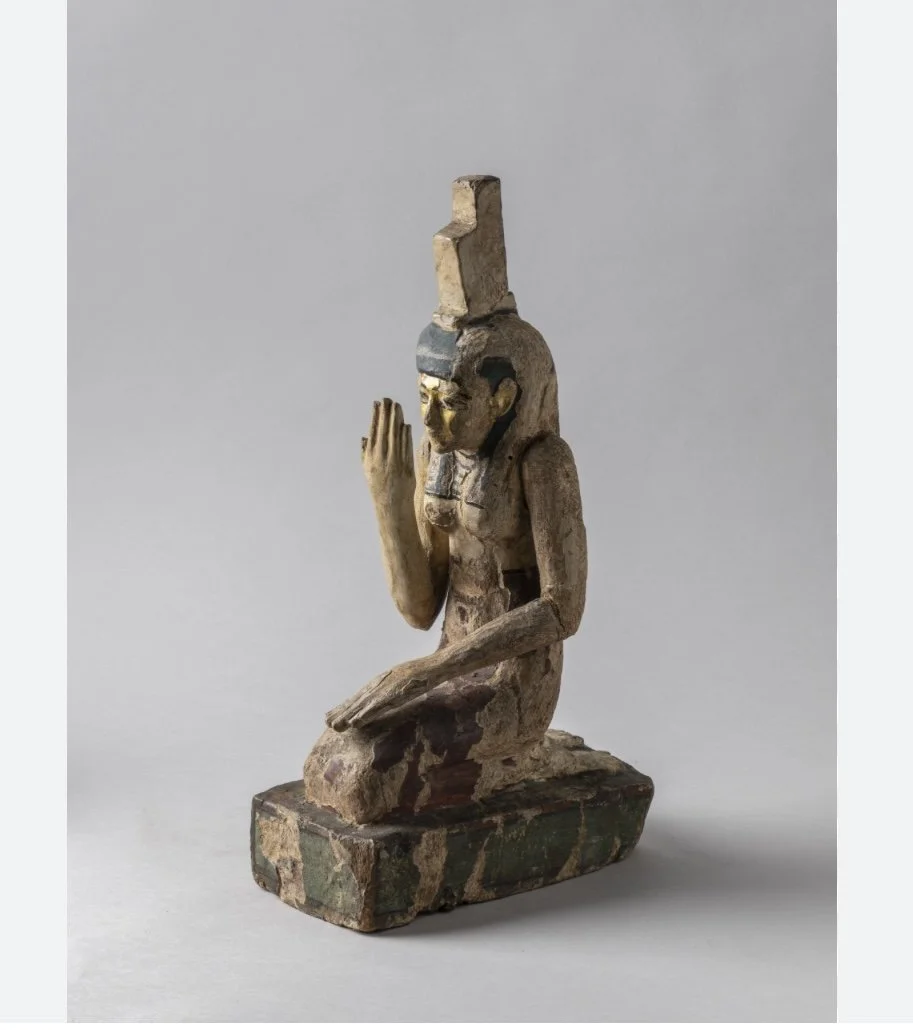The Weeping of Isis
In our “Night of the Dead” Ceremony, honouring the Ancestors, we talked about “the Weeping of Isis” in Her role as Goddess of Death and Mourning, and we connected with Myrrh, as sacred esoteric and magical funerary herb.
“The Weeping of Isis” refers to the mythological lamentations of the Egyptian goddess Isis (and her sister Nephthys) for her murdered husband, Osiris. Isis’s grief and search for the scattered pieces of Osiris’s body highlight themes of loss, resurrection, and the cyclical nature of life, death and rebirth.
“The Lamentations of Isis and Nephthys” are a series of religious liturgies or songs, commemorating the death of Osiris, in which the two goddess-sisters call the soul of the god Osiris in the attempts to symbolically revive the god, glorifying his soul, establishing his body, gladdening his Ka.
Although Lamentation rituals in ancient Egypt were performed in temples as part of funeral services, the annual “Lamentation” rituals for Osiris took place during the season of Inundation, believed to be caused by the sorrowful tears of Isis that filled the Nile river and caused it to flood. The Festivals of Khoiak, was then celebrated around the time the Nile flood retreated in Autumn (on the fourth month of Inundation, Hethara: October ) and before the start of the new agricultural season, linking the god's death and rebirth to the natural cycles of vegetation and the promise of a fertile harvest. Some later iterations -The Roman Isia Festival- are recorded occurring from October 28–November 1.
The “Lamentations of Isis and Nephthys” was a central part of the ritual of the Osiris mysteries, a major religious festival held annually in Abydos and other temples and places belonging to Osiris. These public and private mourning practices aimed to express grief individually and collectively, a sort of catharsis to purify the living, and help the deceased transition to the afterlife.
Papyri and the walls of many tombs are decorated with paintings or bas-reliefs depicting mourners that express pain. Beautiful terracotta statuettes depict them with their arms raised or the palm of their hand on their head as a sign of mourning.
Isis and Nephthys become the archetype of women mourners who follow the funeral procession, beat their chests and ruffle their hair in sign of mourning, a funeral ritual which is essential to achieve the intended goal: resurrection.
The Tears of Isis: Annual Nile Floods:
The annual flooding of the Nile River was believed to be caused by the tears of Isis, which fertilized the land, symbolizing the cyclical connection between death, rebirth, and the agricultural seasons.
“The Lamentations of Isis and Nephthys commemorated the death of Osiris and always preceded the mourning festival that came later in the month of Koiak. A number of reasons account for the festival being celebrated during the season of inundation; but the main reason Hethara 17 was considered the traditional date of Osiris’s murder was that his sorrowing wife Isis is inextricably linked with the festival called the Night of the Drop, which represents the tears isis shed that caused the river to flood.”(1) (p. 32, Ellis N.)
“The death and revival of Osiris provide the mythic echo of the annual rebirth of crops. In the ceremony, seeds were sown in earth, which was from the New Kingdom shaped in moulds to the form of Osiris; the sown earth was watered until the seeds germinated, and then this guarantor of a successful crop was buried. The timing of the festival in the official year placed it in the fourth month of flood, just as the waters receded to expose silt-covered fields fresh for sowing. The name of the festival was ka-her-ka 'ka upon ka' (or 'sustenance upon sustenance'); it survived into Christian times as the name of the fourth month of the season of flood, rendered in Coptic as Khoiak.” (2) https://www.ucl.ac.uk/museums-static/digitalegypt/ideology/khoiak.html
With inherent life within themselves, and the power to preserve life, seeds, have always been associated with the deceased and rebirth.
Just as seeds dormant in the earth, so the deceased buried within her body, will return to new life, a concept that sees a parallel with the ancient Egyptian beliefs about the afterlife and the deceased god Osiris whom, from the underworld is resurrected to new life becoming the regenerative green god of fertility and agriculture. His story represents the cyclical nature of life, death, and rebirth, and the hope for eternal life aspired by the deceased.
Mourning Isis (and Nephthys)
Ptolemaic Period
332–30 BCE
On view at The Met Fifth Avenue in Gallery 899
The Metropolitan Museum of Art, photo by Gustavo Camps.
The goddess Isis, identifiable by her hieroglyph on her head, kneels and raises a hand before her face in a gesture of mourning. The figure forms a pair with the figure of Isis 12.182.23a.
Figures of the two mourning goddess accompany the body of Osiris in representations. In Late Period and Ptolemaic burials kneeling figures of the goddesses may be among the wooden figures in a burial. Presumably they were placed at either end of the sarcophagus of the deceased as they appear at either end of the body of Osiris.
Weeping Isis - Ptolemaic Dynasty: 305 - 30 BC
Isis is shown kneeling, arms raised, weeping. She is wearing the headdress of Isis on this fragment of the trim from a mummy.
Stuccoed fabric
Louvre Museum
Statuette of the weeping Isis
664–332 BC
Provenance: Unknown
Museo Egizio, Torino
Notes:
(1) Normandi Ellis, Feasts of Light, US Quest Books, 1999, 32.
(2) The Festivals of Khoiak, University College London, 2003. https://www.ucl.ac.uk/museums-static/digitalegypt/ideology/khoiak.html
Bibliography
The Festivals of Khoiak, University College London, 2003.
https://www.ucl.ac.uk/museums-static/digitalegypt/ideology/khoiak.html
Egyptian Texts: 1.11
THE LAMENTATIONS OF ISIS AND NEPHTHYS
https://www.attalus.org/egypt/lamentations.html
Joshua J. Mark, 2016, The Lamentations of Isis and Nephthys, https://www.worldhistory.org/article/878/the-lamentations-of-isis-and-nephthys/
The Lamentations of Isis and Nephtys - National Museums Liverpool
https://www.liverpoolmuseums.org.uk/stories/lamentations-of-isis-and-nephtys
Normandi Ellis, Feasts of Light, US Quest Books, 1999









